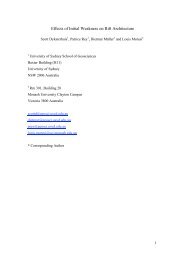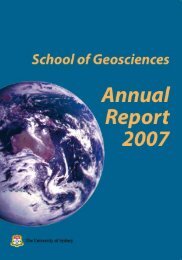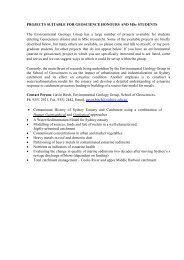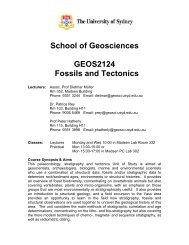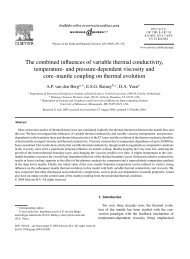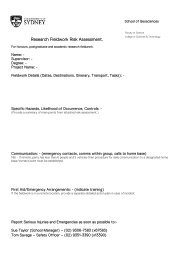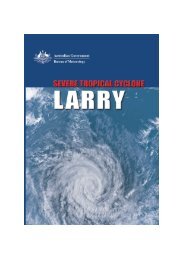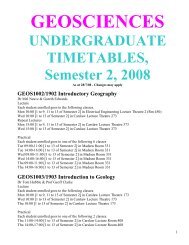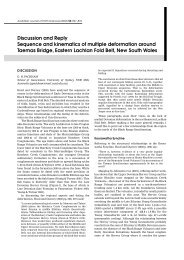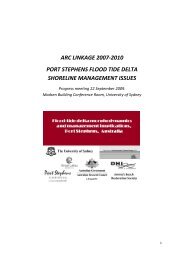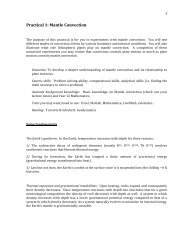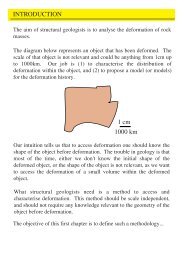Geological and historical records of tsunami in Australia
Geological and historical records of tsunami in Australia
Geological and historical records of tsunami in Australia
Create successful ePaper yourself
Turn your PDF publications into a flip-book with our unique Google optimized e-Paper software.
104 D. Dom<strong>in</strong>ey-Howes / Mar<strong>in</strong>e Geology 239 (2007) 99–123<br />
descriptions exists towards the palaeo<strong>tsunami</strong> record.<br />
Here aga<strong>in</strong>, a dist<strong>in</strong>ction is made between the geological<br />
<strong>and</strong> geomorphological effects <strong>of</strong> palaeo <strong>and</strong> historic<br />
<strong>tsunami</strong> <strong>in</strong> <strong>Australia</strong>.<br />
3.2.1. Geology <strong>and</strong> geomorphology <strong>of</strong> <strong>Australia</strong>n<br />
palaeo<strong>tsunami</strong><br />
The sedimentological description <strong>of</strong> <strong>Australia</strong>n<br />
palaeo<strong>tsunami</strong> deposits may be divided <strong>in</strong> to two<br />
classes. The first relates to sediments laid down by<br />
asteroid generated <strong>tsunami</strong> <strong>and</strong> these deposits are<br />
extremely old. The second class relates to Holocene<br />
palaeo<strong>tsunami</strong>. Consequently, a very substantial hiatus<br />
exists <strong>in</strong> the palaeo<strong>tsunami</strong> record.<br />
Recent work by Hassler et al., (2000), Glikson <strong>and</strong><br />
Allen (2004), Glikson (2006) <strong>and</strong> Glikson et al., (2004)<br />
has focused on the impacts, effects <strong>and</strong> <strong>records</strong> <strong>of</strong><br />
asteroid impacts <strong>in</strong> to the proto-<strong>Australia</strong>n cont<strong>in</strong>ent.<br />
Based upon detailed field reconnaissance <strong>and</strong> mapp<strong>in</strong>g,<br />
rock sampl<strong>in</strong>g <strong>and</strong> laboratory analyses, these researchers<br />
have come to recognise what they describe as the signatures<br />
<strong>of</strong> <strong>tsunami</strong> deposited sediments associated with<br />
these asteroid impacts <strong>in</strong> sedimentary sequences.<br />
Interested readers are referred to their work for more<br />
detail but broadly, their descriptions <strong>of</strong> these deposits<br />
<strong>in</strong>clude:<br />
“microkrystite spherule-bear<strong>in</strong>g diamictite, <strong>in</strong>terpreted<br />
as <strong>tsunami</strong> deposit”, <strong>and</strong> “a 0.6–0.8 m thick unit <strong>of</strong><br />
silicified chert-<strong>in</strong>traclast conglomerate….. The unit<br />
<strong>in</strong>cludes



